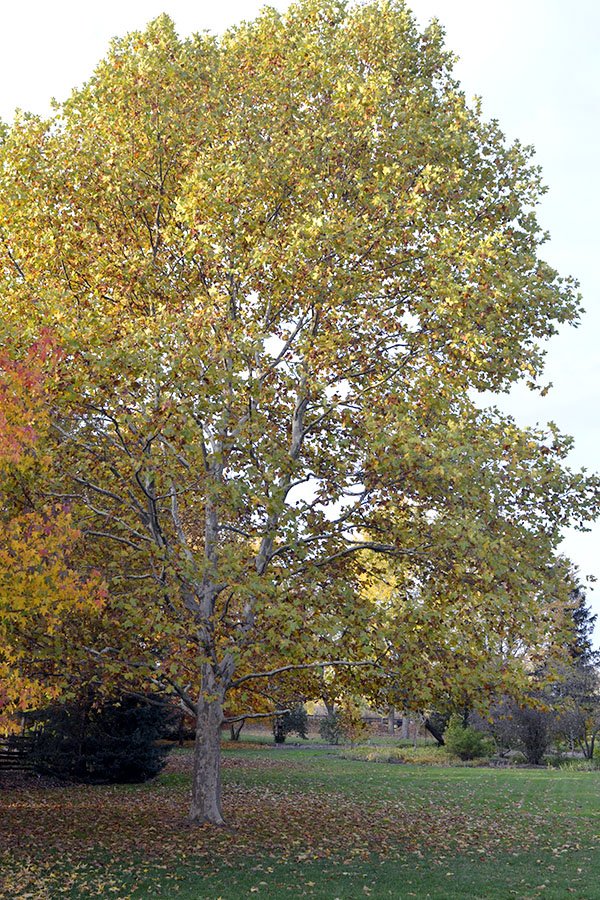
Woody > Platanus > Platanus occidentalis > Platanus occidentalis
Platanus occidentalis
Buttonwood, American Sycamore, Western Plane Tree, Sycamore
Origin: Fossils dated to the Cretaceous found in the arctic period regions suggest P. occidentalis grew throughout the northern hemisphere during the Tertiary period.
Mike's
Opinion


"
A fast growing hard wood with outstanding bark, multi-coloured looking branches, and interesting pendulous orbicular fruit.
Michael Pascoe, NDP., ODH., CLT., MSc. (Plant Conservation)
"
| Family |
| Platanaceae |
| Genus |
| Platanus |
| Species |
| occidentalis |
| Category |
| Woody |
| Pronunciation |
| USDA Hardiness Zone |
| 4a |
| Canadian Hardiness Zone |
| 5 |
| Temperature (°C) |
| -26 C |
| Temperature (°F) |
| -20 F |
| Height |
| 35 m |
| Spread |
| 30 m |
Photographs
Description and Growing Information
Flowering Period
| General Description |
| In North America P. occidentalis is one of the largest broad leafed trees. With no terminal buds it has an interesting zigzag appearance to the branching. |
| Landscape |
| Since P. occidentalis is salt and drought tolerant, it is often used as a street tree or lawn tree in difficult situations. |
| Cultivation |
| Prefers rich, moist, well draining soils in full sun. |
| Shape |
| Broad and rounded at maturity. |
| Growth |
| Fast |
| ID Characteristic |
| Often confused with P. x acerfolia, P. occidentalis has singular fruit and leaf lobes that are wider than long. P. x acerifolia bears fruit in pairs. |
| Pests |
| Plane wilt (Ceratocytis platani), anthracnose, powdery mildew, American plum borer, and sycamore lace bug. |
| Habitat |
| Floodplains and low, wet, rich soil areas. Dominant in mixed forests. |
| Bark/Stem Description |
| Mottled red brown scales flake off to show the pale inner bark. |
| Flower/Leaf Bud Description |
| Single scaled, 6–10 mm, shiny red brown buds that never appear on twig tips. |
| Leaf Description |
| Maple like, 3–5 shallow lobes, 10-20 cm across, irregularly and coarsely toothed, alternate, bright green with a paler underside. |
| Flower Description |
| Unisexual with flower clusters on separate branchlets that bloom in March. Male flowers are 7–10 mm, yellow green, and appear on second year wood. Female flowers are 10–14 mm, red, and form in spring with leaves on the tips of older twigs. |
| Fruit Description |
| Fruit hangs from 8–16 cm slender stalks. Fruit are orbicular, 2–3.5 cm in size and yellow to brown in colour and appear singly. |
| Colour Description |
| Green leaves in the summer that turn yellow in the autumn with red buds and multi coloured bark, P. occidentalis has interest year round. |
| Texture Description |
| Coarse texture with its zigzag branches and massive trunk. |
| Notable Specimens |
| Heritage Trees in Elgin County have noted a specimen at Wellington Road at Dodd’s Creek, Ontario, on the south side of the creek. |
| Propagation |
| By hardwood cuttings in autumn, leafy softwood cuttings in spring, or seed, however seeds require light to germinate. |
